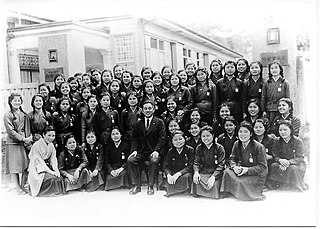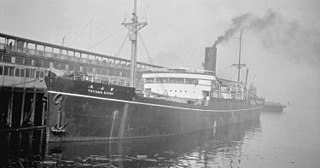 W
WThe Battle of Okinawa , codenamed Operation Iceberg, was a major battle of the Pacific War fought on the island of Okinawa by United States Army and United States Marine Corps (USMC) forces against the Imperial Japanese Army. The initial invasion of Okinawa on 1 April 1945, was the largest amphibious assault in the Pacific Theater of World War II. The Kerama Islands surrounding Okinawa were preemptively captured on 26 March, (L-6) by the 77th Infantry Division. The 98-day battle lasted from 26 March until 2 July 1945. After a long campaign of island hopping, the Allies were planning to use Kadena Air Base on the large island of Okinawa as a base for Operation Downfall, the planned invasion of the Japanese home islands, 340 mi (550 km) away.
 W
WIsamu Chō was an officer in the Imperial Japanese Army known for his support of ultranationalist politics and involvement in a number of attempted coup d'états in pre-World War II Japan.
 W
WHacksaw Ridge is a 2016 biographical war film directed by Mel Gibson and written by Andrew Knight and Robert Schenkkan, based on the 2004 documentary The Conscientious Objector. The film focuses on the World War II experiences of Desmond Doss, an American pacifist combat medic who, as a Seventh-day Adventist Christian, refused to carry or use a weapon or firearm of any kind. Doss became the first conscientious objector to be awarded the Medal of Honor, for service above and beyond the call of duty during the Battle of Okinawa. Andrew Garfield stars as Doss, with Sam Worthington, Luke Bracey, Teresa Palmer, Hugo Weaving, Rachel Griffiths, and Vince Vaughn in supporting roles.
 W
WHimeyuri Peace Museum opened in Itoman, Okinawa Prefecture, Japan in 1989. Located within Okinawa Senseki Quasi-National Park, it is dedicated to the Himeyuri Student Corps during the Battle of Okinawa and to the ideal of Peace.
 W
WThe Himeyuri students , sometimes called "Lily Corps" in English, was a group of 222 students and 18 teachers of the Okinawa Daiichi Women's High School and Okinawa Shihan Women's School formed into a nursing unit for the Imperial Japanese Army during the Battle of Okinawa in 1945. They were mobilized by the Japanese army on March 23, 1945.
 W
WLevel Five is a 1997 French documentary, directed by Chris Marker and starring Catherine Belkhodja.
 W
WKenzaburō Ōe is a Japanese writer and a major figure in contemporary Japanese literature. His novels, short stories and essays, strongly influenced by French and American literature and literary theory, deal with political, social and philosophical issues, including nuclear weapons, nuclear power, social non-conformism, and existentialism. Ōe was awarded the Nobel Prize in Literature in 1994 for creating "an imagined world, where life and myth condense to form a disconcerting picture of the human predicament today".
 W
WThe American invasion of the island of Okinawa, codenamed Operation Iceberg, took place 1 April 1945. The Japanese military was determined to inflate a casualty rate so high that the U.S. government would choose not to invade the Japanese home islands. To this end, the southern portion of the island had been covered with the most extensive system of fortifications and fields of fire yet encountered in the Pacific War.
 W
WFor the April 1945 invasion of Okinawa, the Allies assembled the most powerful naval force in history. Since the few remaining capital ships of the Imperial Japanese Combined Fleet had been sunk or otherwise put out of action at the Battle of Leyte Gulf, the Allies were effectively unopposed in terms of major surface vessels; a single mission consisting of the superbattleship Yamato and a few escorts was undertaken, but the task force did not get within 200 nautical miles of the invasion area. The main Japanese naval opposition within the invasion area came from hundreds of Imperial Japanese Navy Shin'yō-class suicide motorboats and Maru-Ni Imperial Japanese Army attack boats.
 W
WThe Battle of Okinawa , codenamed Operation Iceberg, was a major battle of the Pacific War fought on the island of Okinawa by United States Army and United States Marine Corps (USMC) forces against the Imperial Japanese Army. The initial invasion of Okinawa on 1 April 1945, was the largest amphibious assault in the Pacific Theater of World War II. The Kerama Islands surrounding Okinawa were preemptively captured on 26 March, (L-6) by the 77th Infantry Division. The 98-day battle lasted from 26 March until 2 July 1945. After a long campaign of island hopping, the Allies were planning to use Kadena Air Base on the large island of Okinawa as a base for Operation Downfall, the planned invasion of the Japanese home islands, 340 mi (550 km) away.
 W
WMinoru Ōta was an admiral in the Imperial Japanese Navy during World War II, and the final commander of the Japanese naval forces defending the Oroku Peninsula during the Battle of Okinawa.
 W
WThe Pinnacle was the name given to a 30 feet (9.1 m) spire, atop a 450 feet (140 m) ridge of coral approximately 1,000 yards (910 m) southwest of Arakachi, Okinawa. Heavily fortified by the 62nd Division, this outpost to Japan's main defenses at Shuri held up the U.S. 7th Infantry Division on 5–6 April 1945 with accurate and well-concealed machine gun, mortar and artillery fire.
 W
WYoshiko Sakurai is a Japanese journalist, TV presenter, and writer. She is also president of the Japan Institute for National Fundamentals, established in 2007.
 W
WToyama Maru (富山丸) was a 7,089-ton Japanese troop transport during World War II. On 29 June 1944, Toyama Maru was transporting over 6,000 men of the Japanese 44th Independent Mixed Brigade when she was torpedoed and sunk by the submarine USS Sturgeon (SS-187) in the Nansei Shoto, off Taira Jima, Japan, at position 27º47'N, 129º05'E. 5,400 soldiers and crew members were killed during the sinking, although 600 others got off the ship, making the sinking of Toyama Maru one of the worst maritime disasters in history.
 W
WTsushima Maru was a Japanese passenger/cargo ship that was sunk by the submarine USS Bowfin during World War II, while carrying hundreds of schoolchildren from Okinawa to Kagoshima.
 W
WMitsuru Ushijima was a Japanese general who served during the Second Sino-Japanese War and World War II. He was the commanding general of the 32nd Army, which fought in the Battle of Okinawa during the final stages of the war. Ushijima's troops were defeated, and at the end of the battle he committed suicide.
 W
WColonel Hiromichi Yahara was the senior staff officer in charge of operations of the 32nd Japanese Army at Okinawa during the American invasion of that island during World War II.